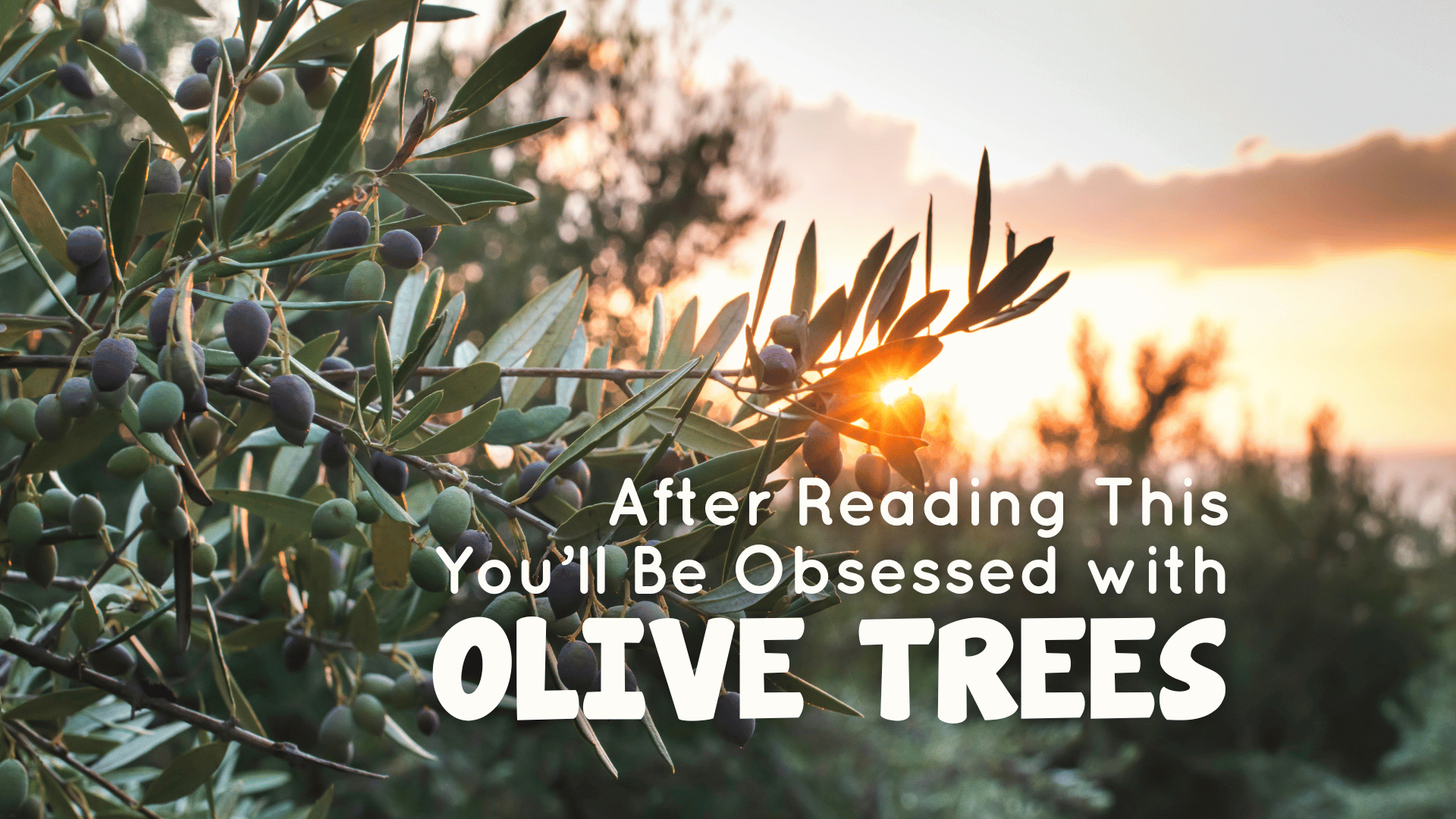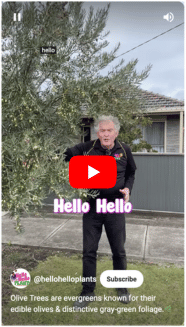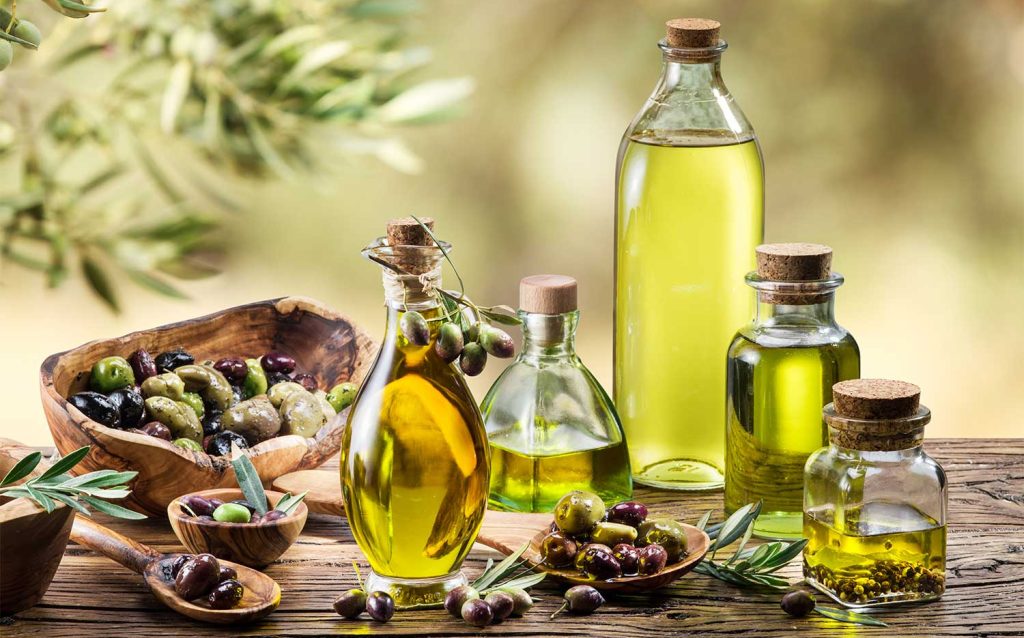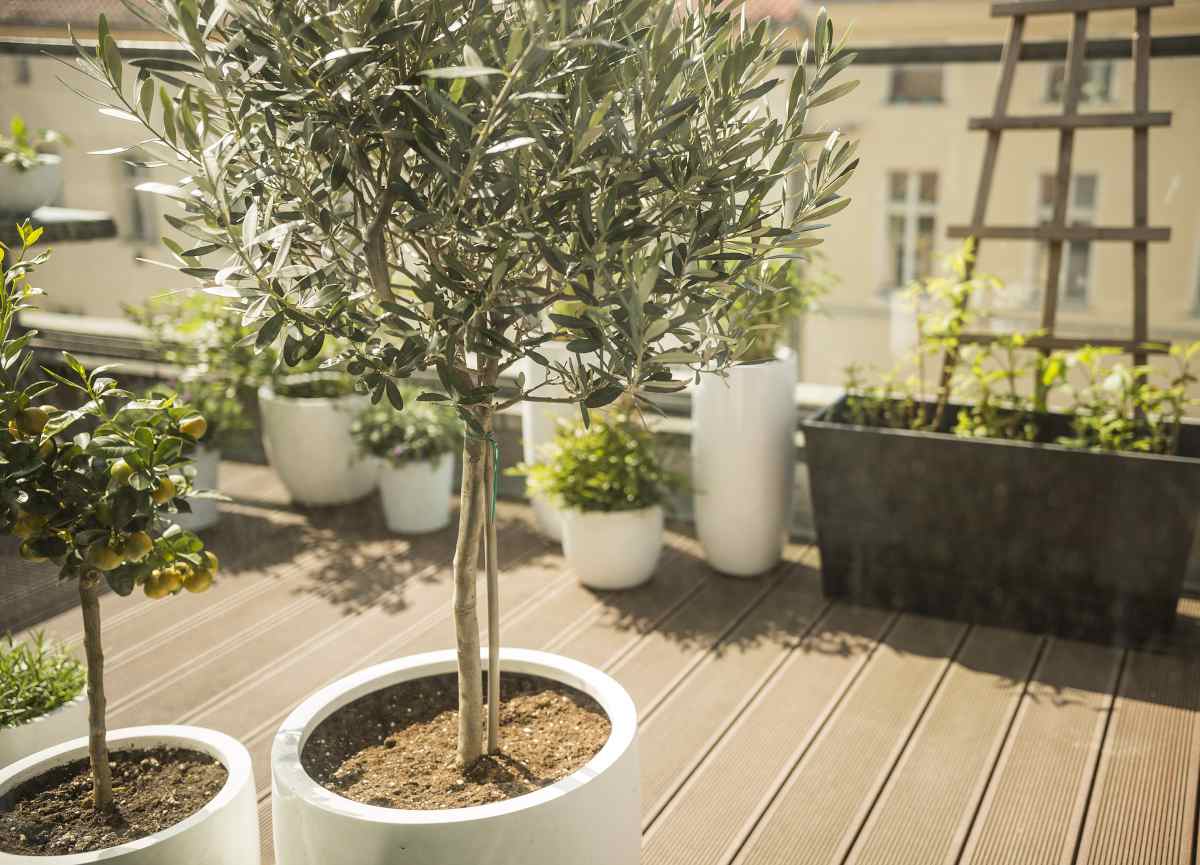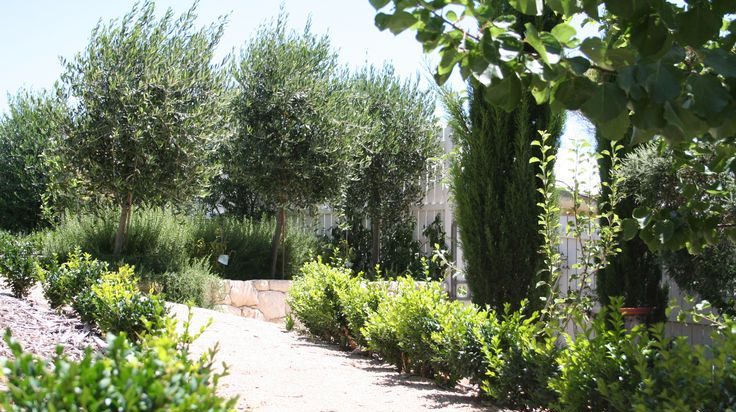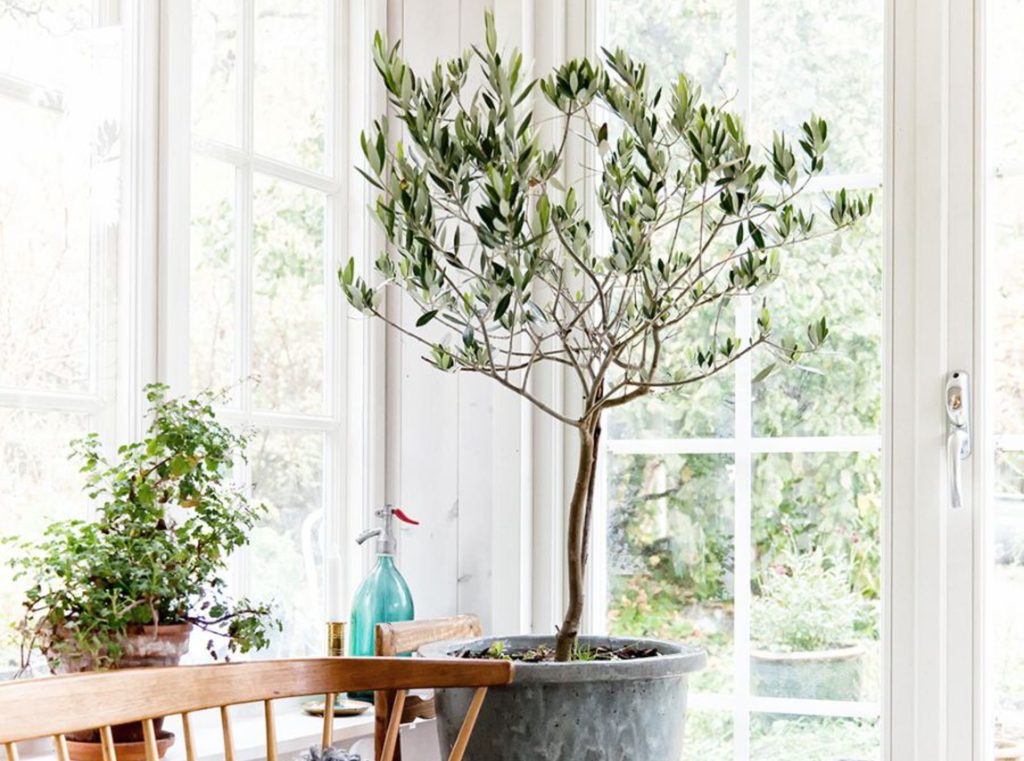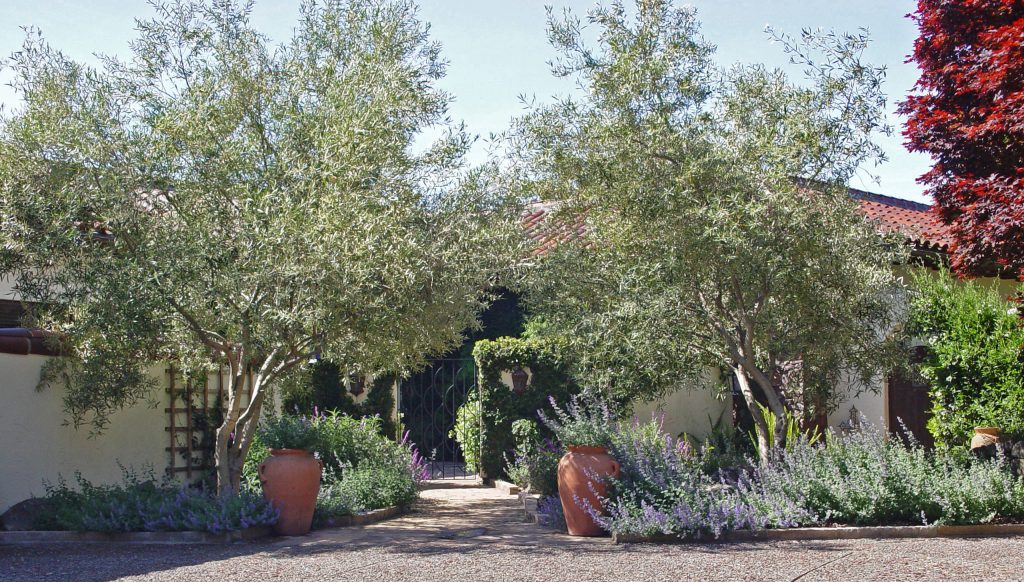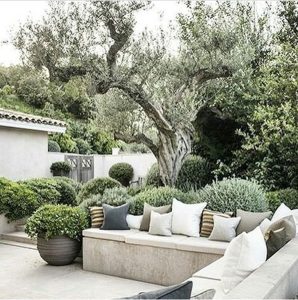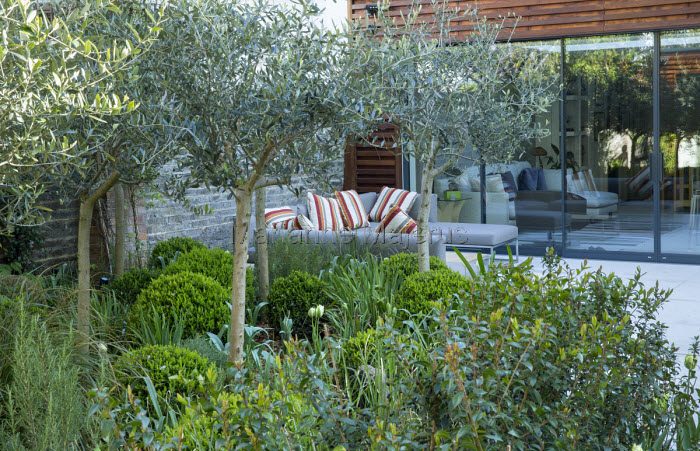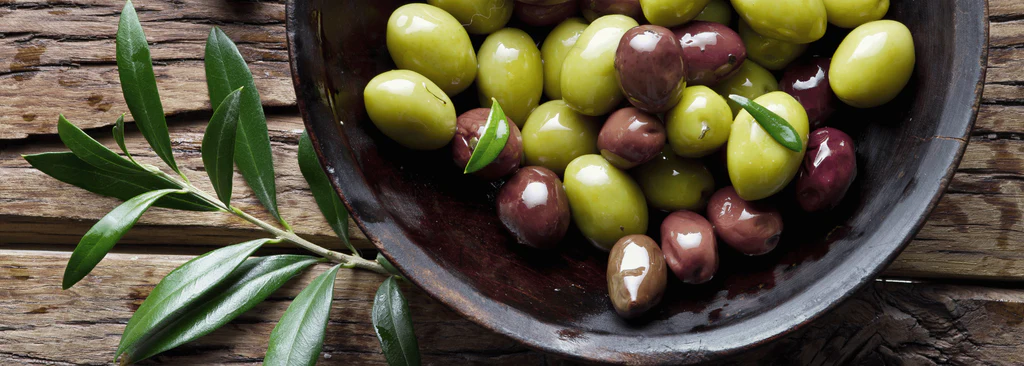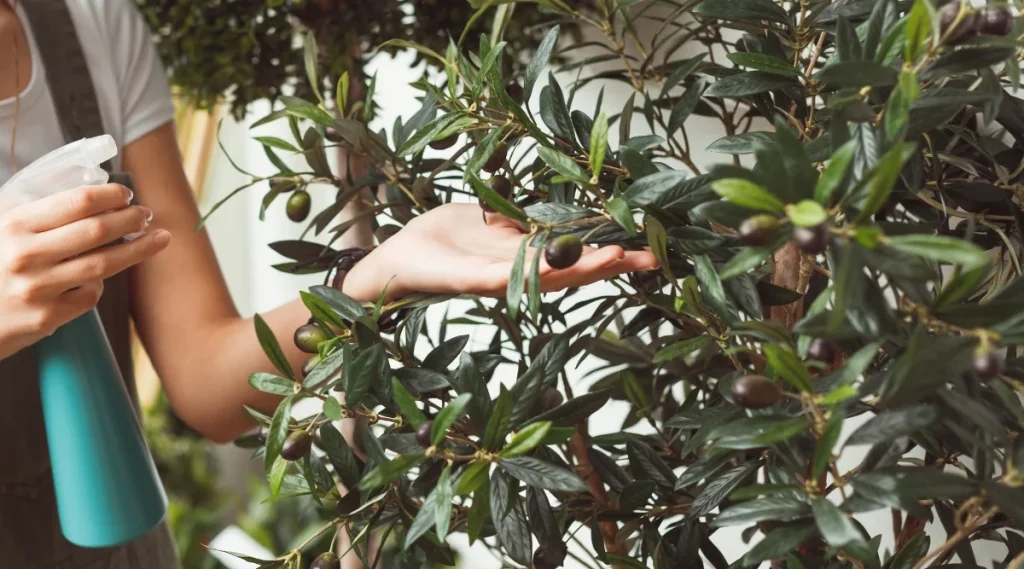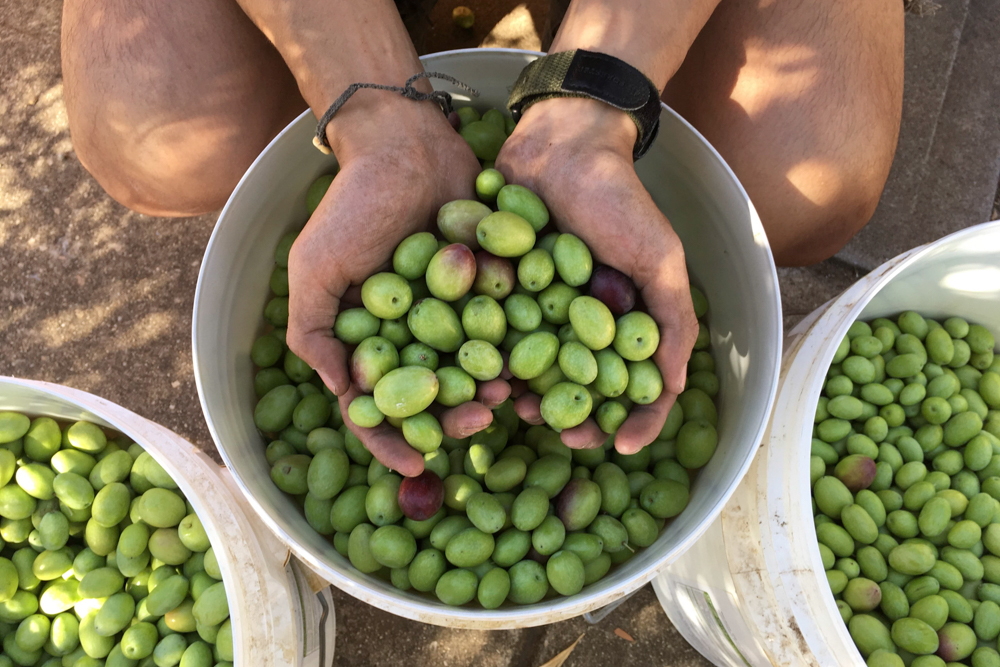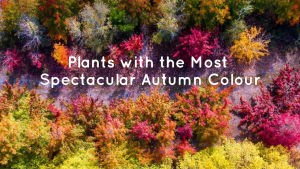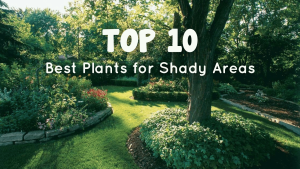Applications
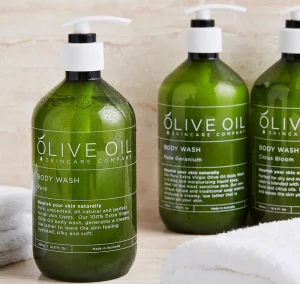 The most obvious benefit here are the olives! Sure you might just be thinking about plucking them and tossing it in a salad, but there’s actually so many different things you can do with an olive. You can make it into pickled fruit. You can extract the oil, which can then be cooked with or tossed over some bread. You can even use the oil in hair care or skin care. Also the leaves can be used in herbal applications. The options just go on and on.
The most obvious benefit here are the olives! Sure you might just be thinking about plucking them and tossing it in a salad, but there’s actually so many different things you can do with an olive. You can make it into pickled fruit. You can extract the oil, which can then be cooked with or tossed over some bread. You can even use the oil in hair care or skin care. Also the leaves can be used in herbal applications. The options just go on and on.
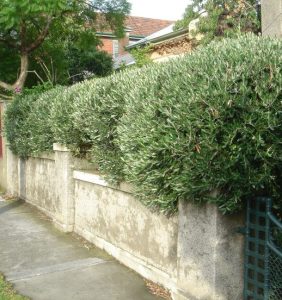 But what about in the garden? Apart from using it as an orchard, there are lot of other ways you can plant an Olive Tree. One of those ways is as a hedge or windbreak. I’ve seen beautiful windbreaks around vineyards, and it gives you that wonderful Mediterranean look to have Grapevines and a beautiful Olive Hedge. You can trim them up quite nicely to make a tall, narrow hedge or stick them in a pot and make a topiary out of it. Really, you could shape them as you please – a pleached hedge, a ball on a stick, even cloud pruned. Cloud pruned is when you trim the branches into lovely little series of balls – we have pictures on our website if you’re still confused.
But what about in the garden? Apart from using it as an orchard, there are lot of other ways you can plant an Olive Tree. One of those ways is as a hedge or windbreak. I’ve seen beautiful windbreaks around vineyards, and it gives you that wonderful Mediterranean look to have Grapevines and a beautiful Olive Hedge. You can trim them up quite nicely to make a tall, narrow hedge or stick them in a pot and make a topiary out of it. Really, you could shape them as you please – a pleached hedge, a ball on a stick, even cloud pruned. Cloud pruned is when you trim the branches into lovely little series of balls – we have pictures on our website if you’re still confused.
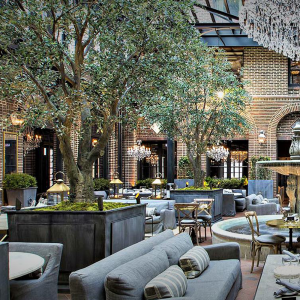 If you have an apartment, you can grow Olive Trees in a pot on the balcony and trim them down to the size you want. They’re actually perfect for a spot like this, because a lot of the time a balcony in a high-rise apartment is a hot windy spot, where not a lot of other plants can survive. They’re fantastic as a feature plant – I’ve seen so many restaurants use them as such, and they look incredible. Don’t feel restricted to growing your Olive Tree just in the backyard. They work fantastic on the nature strip as well. This is because it doesn’t seem like the birds go for them. I visited a street of Olive Trees in Campbellfield and there were heaps of olives. If that had been apples or plums, birds probably would’ve eaten them all. So they’re a hardy tree that you don’t have to worry about too much. From a landscape point of view, the Olive Tree provides you with so many choices.
If you have an apartment, you can grow Olive Trees in a pot on the balcony and trim them down to the size you want. They’re actually perfect for a spot like this, because a lot of the time a balcony in a high-rise apartment is a hot windy spot, where not a lot of other plants can survive. They’re fantastic as a feature plant – I’ve seen so many restaurants use them as such, and they look incredible. Don’t feel restricted to growing your Olive Tree just in the backyard. They work fantastic on the nature strip as well. This is because it doesn’t seem like the birds go for them. I visited a street of Olive Trees in Campbellfield and there were heaps of olives. If that had been apples or plums, birds probably would’ve eaten them all. So they’re a hardy tree that you don’t have to worry about too much. From a landscape point of view, the Olive Tree provides you with so many choices.
Also a little note – I often get the owners of Italian or Greek restaurants that want a Mediterranean feel to their interior décor and so want to put an Olive Tree inside. But see the thing is, Olive Trees don’t do so well as indoor plants. What I’ve found from talking with customers is after a few months they go backwards. So what I’d recommend is buying two Olive Trees, placing one indoors and one outdoors, and then about every week or so, changing them around. Which I get is a lot of effort, but hey, if you really want an Olive Tree indoors this is just what you’re going to have to do if you want to keep it alive and thriving.
Garden Style
I’ll often use Olive Trees in my Garden Designs. Now if someone is wanting a cloud pruned one, I’ll typically steer them towards getting an advanced Olive and trimming it themselves, as a cloud pruned one can be really quite expensive. I like to plant an Olive Tree as the centre feature and then surround it with plants such as Correa alba balls, ‘Blue Fescue’ Grass or any other nice grasses. So then your feature is this hardy evergreen tree that is low maintenance and going to last for a long time.
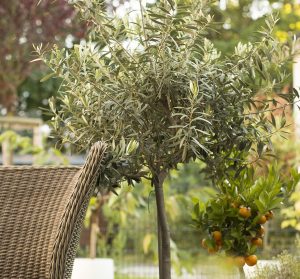 Let’s say you want to lean in completely to that relaxed Mediterranean style garden with your gorgeous Olive Tree. I would recommend planting Rose ‘Pink’ PBR Carpet Rose, Lavandula ‘French’ Lavender, Rosmarinus ‘Blue Lagoon’ Rosemary, Blue Convolvulus and all those plants that just give off a fabulous Tuscan Italian feel. We actually have an entire section on our website that is dedicated to plants that have a Mediterranean style and we give you some pointers on other bits of design you can incorporate. Check it out here.
Let’s say you want to lean in completely to that relaxed Mediterranean style garden with your gorgeous Olive Tree. I would recommend planting Rose ‘Pink’ PBR Carpet Rose, Lavandula ‘French’ Lavender, Rosmarinus ‘Blue Lagoon’ Rosemary, Blue Convolvulus and all those plants that just give off a fabulous Tuscan Italian feel. We actually have an entire section on our website that is dedicated to plants that have a Mediterranean style and we give you some pointers on other bits of design you can incorporate. Check it out here.
The Fruits of Your Labour
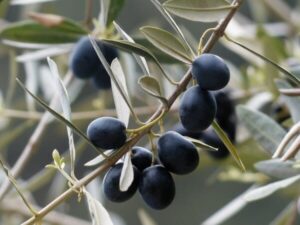 Let’s chat about how you can get the best out of your olives. First step – decide what sort of olive you want. There’s the kalamata olive, which is delicious, and for the best performance you need to grow it alongside another Olive Tree that it can cross pollinate with. In general it’s a good idea to plant a couple varieties together, and make sure to do you research about what varieties compliment each other nicely to get the best amount of fruit. For example, there are types of Olive Trees that have been bred for hundreds of years just for their oil, or Olive Trees that are very productive but have fairly small fruit. Then you also got your Olive Trees that have medium sized fruit and are good for oil or pickling. This is why you need to first think about what you want out of your olives – fruit, oil, or both?
Let’s chat about how you can get the best out of your olives. First step – decide what sort of olive you want. There’s the kalamata olive, which is delicious, and for the best performance you need to grow it alongside another Olive Tree that it can cross pollinate with. In general it’s a good idea to plant a couple varieties together, and make sure to do you research about what varieties compliment each other nicely to get the best amount of fruit. For example, there are types of Olive Trees that have been bred for hundreds of years just for their oil, or Olive Trees that are very productive but have fairly small fruit. Then you also got your Olive Trees that have medium sized fruit and are good for oil or pickling. This is why you need to first think about what you want out of your olives – fruit, oil, or both?
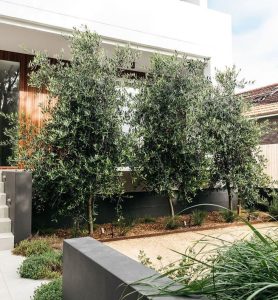 Next step is to figure out how many trees you can fit in your garden for optimum cross-pollinating. Don’t freak out – I’m not saying you need to go and shove as many Olive Trees in your garden as possible. You really just need two to three Olive Trees, if you got space for more and you want more, be my guest. Even just one is sufficient. I have a friend in Adelaide, and they keep their family going for the whole year with the oil press from just the Olive Tree in their suburban backyard. By the way, everything I’ve said here does apply to an Olive hedge as well – so don’t forget that is an option too.
Next step is to figure out how many trees you can fit in your garden for optimum cross-pollinating. Don’t freak out – I’m not saying you need to go and shove as many Olive Trees in your garden as possible. You really just need two to three Olive Trees, if you got space for more and you want more, be my guest. Even just one is sufficient. I have a friend in Adelaide, and they keep their family going for the whole year with the oil press from just the Olive Tree in their suburban backyard. By the way, everything I’ve said here does apply to an Olive hedge as well – so don’t forget that is an option too.
Suitability & Care
Most of the places where Olive Trees are growing is broken limestone country. So the alkalinity is fairly high, and luckily most of Victoria tends to be more acidic. So for your Olive Tree plenty of Dolomite Lime is really good, a bit of fertilizer – organic or artificial, and some summer water. Keep the grass and weeds away from the bottom. They love a hot, open, and sunny spot. If you live on a beach front an Olive Tree is perfect. A lot of plants would shrivel and die from the salt spray coming in. But an Olive Tree just takes it and keeps on thriving. A real trooper of a plant.
Pricing
What a great tree, it must be so expensive! Nope. They’re actually very much a reasonably priced plant, and if you buy them small, they can be quite cheap. If that isn’t already great enough, we’ve got a special on some Olive Trees going on at the moment.
If you go to our website, you’ll see a lot of different varieties for sale (some linked above), and we have advanced options as well. I get the website can be a bit overwhelming with all the different types so please don’t hesitate to reach out to us for some help. You can come down to store or ring us up, we are more than happy to give you advice and figure out what type is best for you.
Things To Be Aware Of
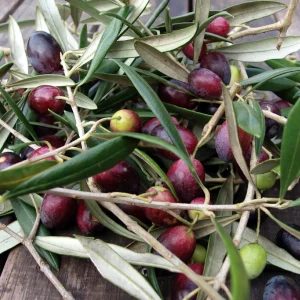 Let’s dive into some rapid-fire technical details. Black or green olives? Well, actually your tree has both. Generally speaking, your tree will start with green olives then as they ripen up, they’ll turn black. If you get a super heavy crop one year, it’s likely you’ll get a much lighter crop the next year. But this tends to happen more with the older varieties, as the newer varieties have been bred to be more consistent. Which is why it pays to have a few different Olive Trees working together, cross-pollinating, and increasing the crop.
Let’s dive into some rapid-fire technical details. Black or green olives? Well, actually your tree has both. Generally speaking, your tree will start with green olives then as they ripen up, they’ll turn black. If you get a super heavy crop one year, it’s likely you’ll get a much lighter crop the next year. But this tends to happen more with the older varieties, as the newer varieties have been bred to be more consistent. Which is why it pays to have a few different Olive Trees working together, cross-pollinating, and increasing the crop.
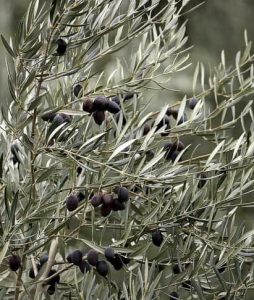 Olive Trees don’t have a particularly dangerous root system, I’ve never heard an architect saying to be cautious of planting an Olive Tree around the house. You need to be mindful of the fact that some Olive Trees don’t fruit such as the Swan Hill or the Tolley’s Upright. The Tolley’s Upright is very tall and upright and has a different style of foliage. The Swan Hill is more spreading and conventional with barely any fruit. So if you’re after the look of the Olive Tree without the olives then these would be perfect options. Or you can just take a fruiting Olive Tree and treat it like an ornamental plant – the black olives look quite lovely against the silver foliage.
Olive Trees don’t have a particularly dangerous root system, I’ve never heard an architect saying to be cautious of planting an Olive Tree around the house. You need to be mindful of the fact that some Olive Trees don’t fruit such as the Swan Hill or the Tolley’s Upright. The Tolley’s Upright is very tall and upright and has a different style of foliage. The Swan Hill is more spreading and conventional with barely any fruit. So if you’re after the look of the Olive Tree without the olives then these would be perfect options. Or you can just take a fruiting Olive Tree and treat it like an ornamental plant – the black olives look quite lovely against the silver foliage.
In Closing
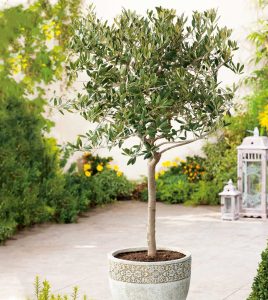 Okay that was a lot of information. So let’s go over the basics again. Olive Trees are incredible. Olive Trees can be used as a hedge, feature tree, windbreak, or screen. They’re low maintenance and tough as rocks. They give you delicious fruit that can be used in many different ways. They’re more reliable than a Toyota Corolla. And right now we’ve got an excellent sale going on.
Okay that was a lot of information. So let’s go over the basics again. Olive Trees are incredible. Olive Trees can be used as a hedge, feature tree, windbreak, or screen. They’re low maintenance and tough as rocks. They give you delicious fruit that can be used in many different ways. They’re more reliable than a Toyota Corolla. And right now we’ve got an excellent sale going on.
Well, I hope that was enough to get you to jump on the Olive Tree bandwagon.
Until next time,
Chris



